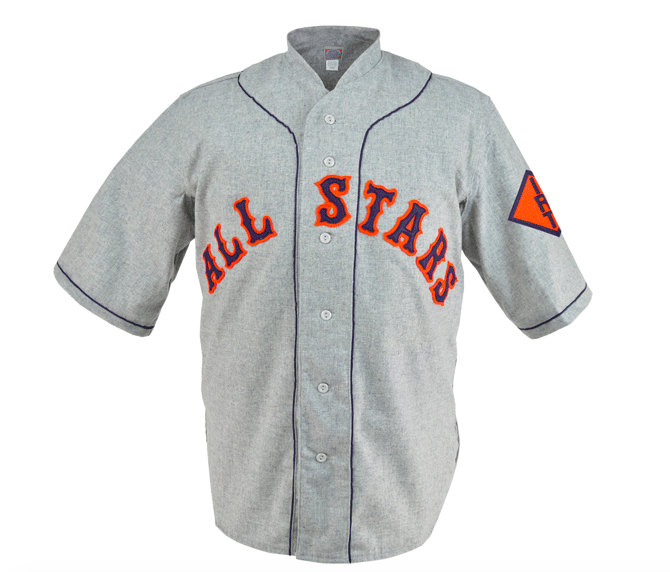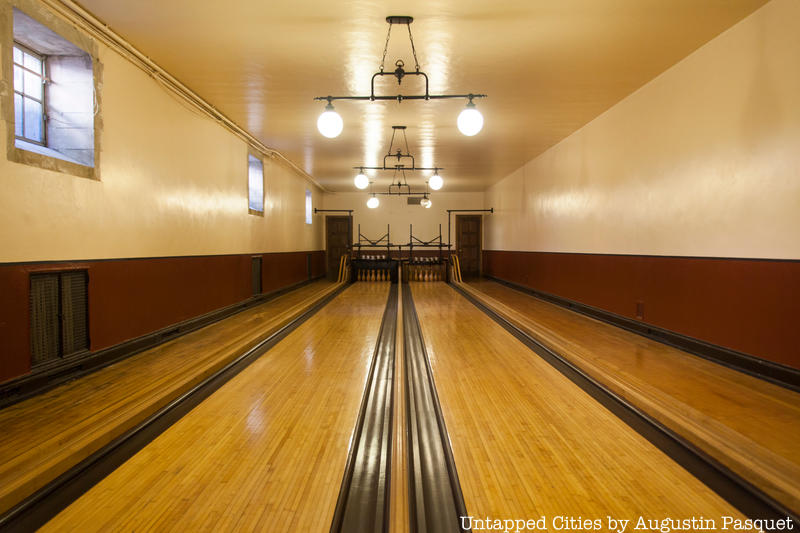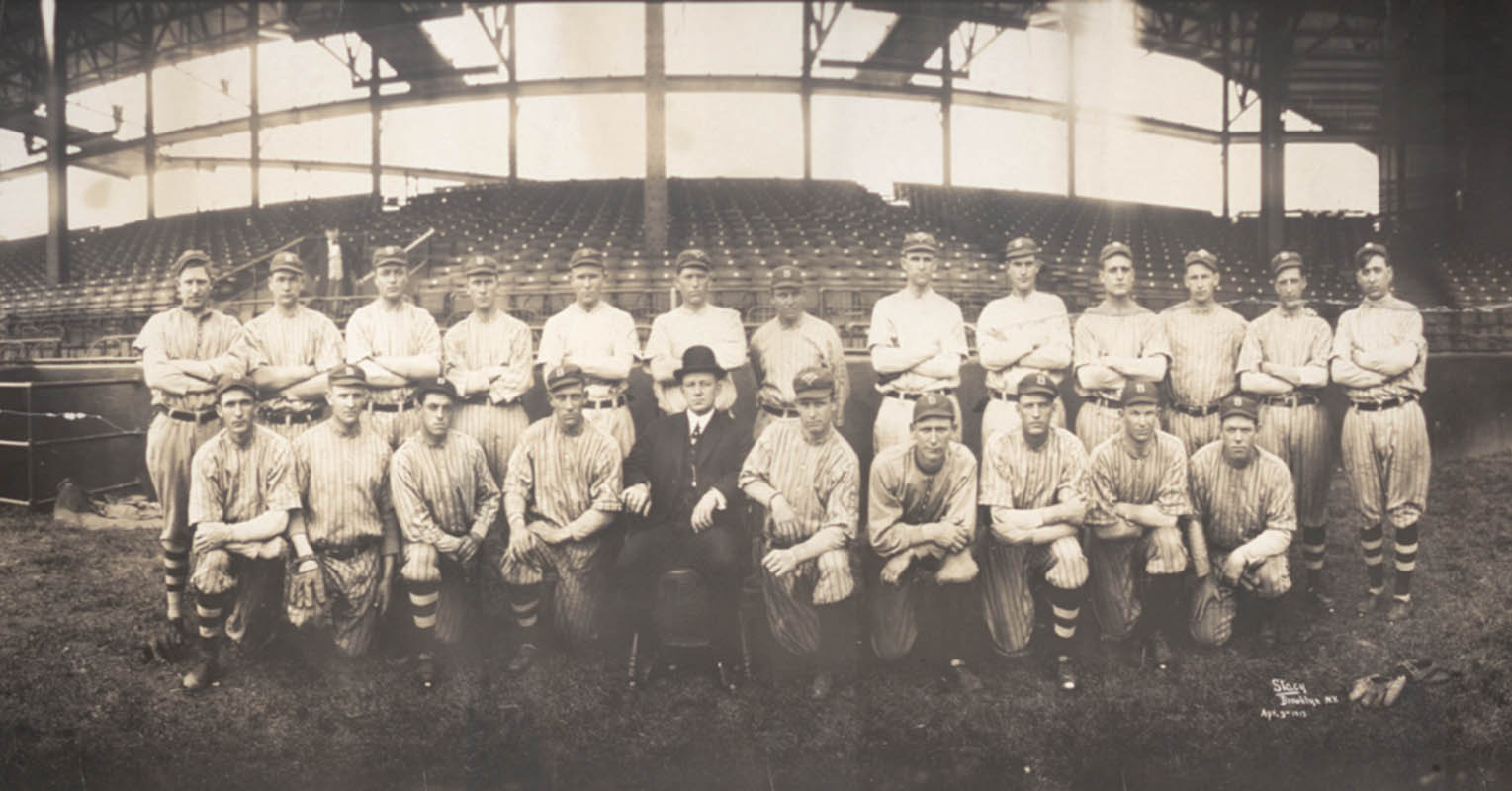Before there was a “subway series,” there was literally a baseball league sponsored by New York City’s original subway line, the Interborough Rapid Transit Company. The IRT was founded in 1902 and the first ride for the public took place on October 27, 1904. The IRT also operated rapid transit lines and elevated railways throughout the city before the company was purchased by the city in 1940. In addition to revolutionizing transportation throughout the city though, the IRT was also surprisingly instrumental in developing New York’s sports scene.
While the IRT was constructing new railway lines, it also sponsored semi-pro baseball teams and professional soccer teams. According to the Electric Railway Journal in 1914, the IRT Baseball League was composed of seven teams of employees “recruited from the car shops, the signal department, subway trainmen, car equipment department, chief engineer’s department, transportation department of the Manhattan division and the general office,” in descending order of record. The car shops team had a 15-3 record and went on to play the champion baseball team of the Pennsylvania Railroad. Over 8,000 people flocked to Van Cortland Park to watch the game, including practically all IRT officers and department heads. The Pennsylvania team beat the IRT team 5-4, but both teams traveled to Brighton Beach, Brooklyn, for a post-game party.
 The company Ebbets Field Flannels still makes an authentic reproduction of the IRT All Stars jersey. Photo courtesy Ebbets Field Flannels.
The company Ebbets Field Flannels still makes an authentic reproduction of the IRT All Stars jersey. Photo courtesy Ebbets Field Flannels.
In 1915, the car equipment department took the victory for the IRT Baseball League with a 14-2 record. The car equipment team “smothered” the team representing the Erie Railroad. Officials of state and city administrations, executive officials of prominent electrical transportation systems, and officials from the Public Service Commission were invited to the game and subsequent clambake at the Brighton Beach Casino, and the player with the best all-around record received a cup donated by Harry M. Hempstead, president of the New York Giants. Ebbets Field Flannels company still offers authentic reproductions of jerseys worn by the Interborough Rapid Transit All Stars in the 1940s.
 A turn-of-the-century bowling alley, this one located in Greystone Mansion in Los Angeles where There Will Be Blood was filmed.
A turn-of-the-century bowling alley, this one located in Greystone Mansion in Los Angeles where There Will Be Blood was filmed.
On a site note, there was also a “subway bowling team” which according to the Brooklyn Daily Eagle on May 6th, 1908, was compromised of bowlers from the “Subway bowling alleys” located at State and Smith streets in Brooklyn, likely part of the Hoyt-Schermerhorn subway station. A little over a week later, a large tournament of bowlers from different leagues competed and the multi-day event was reported on vividly in the Brooklyn Daily Eagle with the subway bowling team competing with other teams from the New York region. On the roster included teams from Grand Central alleys, the telephone company, the Masonic Club, the Long Island Navy League, the Foresters of America, and many others — quite a cross-section of New York at the time. Unfortunately, the subway bowlers were “beaten three straight on their own alleys.”
The IRT also sponsored a number of soccer teams including the New York IRT and the IRT Rangers. The New York IRT entered the New York State Association Football League in 1916 and won the La Sultana Cup and the Southern New York Association Cup in 1917 and 1918. The New York IRT also made it to the fourth round of the 1918 National Challenge Cup before losing to Paterson F.C. The team proceeded to join the semi-professional National Association Football League but withdrew after just five games.
A few years later, the IRT also sponsored the IRT Rangers, a short-lived soccer team, in the late 1920s. The Rangers began as an amateur team in the Southern New York Soccer Association (SNYSA). Yet, after the American Soccer League (ASL) suspended three teams for defying the ASL’s boycott on the National Challenge Cup, a new league called the Eastern Professional Soccer League (ESL) was formed and included the three expelled teams, four teams from the SNYSA, and a new team called New York Hakoah. The IRT Rangers finished 4th in the 1928-1929 season but finished in last in 1929. The Atlantic Coast Conference formed after the merging of the ESL and the ASL, however, and the Rangers chose not to move into the new league. The Rangers played home games at the Dyckman Oval and McGolrick Field in Greenpoint, Brooklyn.
Little is known about these minor and short-lived sports teams, yet the Interborough Rapid Transit Company played a significant role in developing New York’s sports scene, even amid economic crisis.
Next, read about more secrets of the NYC subway.
The header photo is from Library of Congress, circa 1913 of a Brooklyn baseball club photographed by Charles E. Stacy. It is not specifically of the IRT All-Stars.






